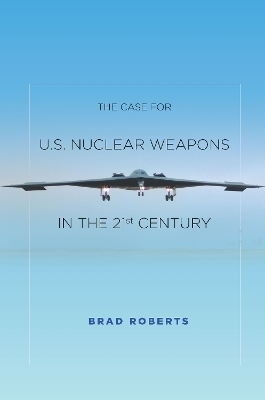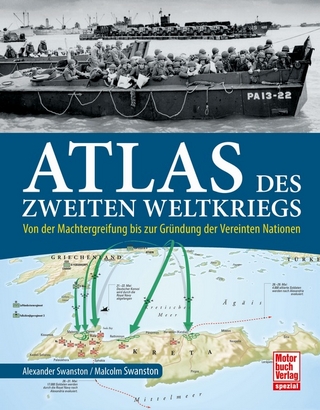
The Case for U.S. Nuclear Weapons in the 21st Century
Stanford University Press (Verlag)
978-0-8047-9713-9 (ISBN)
Drawing on the author's experience in the making and implementation of U.S. policy in the Obama administration, this book examines that real world experience and finds important lessons for the disarmament enterprise. Central conclusions of the work are that other nuclear-armed states are not prepared to join the United States in making reductions, and that unilateral steps by the United States to disarm further would be harmful to its interests and those of its allies. The book ultimately argues in favor of patience and persistence in the implementation of a balanced approach to nuclear strategy that encompasses political efforts to reduce nuclear dangers along with military efforts to deter them.
Brad Roberts is Director of the Center for Global Security Research at Lawrence Livermore National Laboratory. From 2013 to 2014 he was a William J. Perry Fellow at Stanford University's Center for International Security and Cooperation. From 2009 to 2013, he served as Deputy Assistant Secretary of Defense for Nuclear and Missile Defense Policy.
Contents and Abstracts1The Evolution of U.S. Nuclear Policy and Posture Since the End of the Cold War chapter abstractThis chapter traces the evolution of U.S. nuclear policy and posture from the Cold War to today. It reviews the thinking behind the three Nuclear Posture Reviews conducted by each presidential administration as well as the unfolding debate within the nongovernmental expert community about deterrence and disarmament. It highlights elements of continuity and change in U.S. policy and posture. It concludes with a set of questions about the next 25 years.
2The First New Problem: Nuclear-Armed Regional Challengers chapter abstractThis chapter examines the deterrence challenges for the United States posed by a nuclear-armed North Korea and perhaps other nuclear-armed regional challengers in the future. It sets out a spectrum of deterrence challenges from the lowest to the highest ends of conflict with an eye to illuminating how such a conflict might escalate and de-escalate. In invokes the term "theory of victory" to examine concepts developed in North Korea for nuclear blackmail and brinksmanship.
3The New Regional Deterrence Strategy chapter abstractThis chapter sets out the response of the United States to the new strategic problem posed by regional challengers armed with nuclear weapons and long-range missiles. That response emphasizes a comprehensive strategy to strengthen regional deterrence architectures in partnership with U.S. allies. The chapter also sets out a "blue theory of victory" as a counter to the "red theory" in chapter 2.
4The Second New Problem: Relations with Putin's Russia chapter abstractThis chapter reviews U.S. efforts since the end of the Cold War to move the political and security relationship with Russia in a positive new direction. Highlighting elements of continuity across four presidential administrations, the chapter then explores Russia's rising disaffection and the dramatic turn in Russian policy and posture of 2014. The chapter than examines developments in Russian military doctrine, concluding that the more adversarial quality of Russia's relations with the West require shifts in NATO and U.S. doctrine
5The Evolving Relationship with China chapter abstractThis chapter reviews U.S. efforts since the end of the Cold War to move the political and security relationship with China in a more positive direction and to begin a dialogue with China on nuclear issues and strategic stability. In the absence of such a dialogue, the United States has relied on unofficial dialogues to generate insights into Chinese thinking, as summarized here. The chapter then examines developments in China's military doctrine, concluding that China has a clearly elaborated set of ideas about how to secure its interests in an armed confrontation with the United States under the nuclear shadow.
6Extended Deterrence and Strategic Stability in Europe chapter abstractThis chapter reviews NATO's efforts to adjust its deterrence and defense posture to a changed and changing world since the end of the Cold War. It explores NATO's reactions to the March 2014 Crimea shock and sets out a longer-term agenda for responding to further negative developments in Russian policy and posture. It argues in favor of NATO's development of theory of victory of its own to negate Russian nuclear-backed coercion and aggression.
7Extended Deterrence and Strategic Stability in Northeast Asia chapter abstractThis chapter reviews the efforts of the United States, Japan, and the Republic of Korea to adapt extended deterrence to new developments in Northeast Asia, including primarily the emergence of a nuclear-armed North Korea. It reviews Obama administration efforts to institutionalize and advance a cooperative agenda. It identifies policy challenges on the pathway forward.
8The Broader Nuclear Assurance Agenda chapter abstractThis chapter begins with a summary of insights into the challenges of assuring U.S. allies in Europe and Northeast Asia under the U.S. nuclear umbrella drawn from the prior two chapters. This chapter also challenges the reader to think more broadly about the assurance requirements of U.S. nuclear strategy. It does so by considering the assurance requirements of 5 other sets of actors.
9Conclusions chapter abstractThis chapter argues that the time is not ripe for additional substantial reductions to the role of nuclear weapons in U.S. security strategies and to number of nuclear weapons in the U.S. arsenal. The record of U.S. diplomacy shows that it has not been possible so far to create the conditions to allow such further changes. This argument culminates in a restatement of the case for U.S. nuclear weapons, derivative of the lessons from U.S. efforts to create those conditions and to adapt deterrence to 21st century purposes.
10Implications for Future Strategy, Policy, and Posture Reviews chapter abstractThis chapter examines the implications of chapter 9 for future reviews of U.S. foreign and defense policy and of U.S. nuclear policy and posture. It begins with an assessment of the enduring value of the balanced approach to nuclear strategy, encompassing political, economic, and military means. It then examines potential adjustments in those means in light of recent U.S. experience.
| Erscheint lt. Verlag | 9.12.2015 |
|---|---|
| Verlagsort | Palo Alto |
| Sprache | englisch |
| Maße | 152 x 229 mm |
| Gewicht | 499 g |
| Themenwelt | Sachbuch/Ratgeber ► Geschichte / Politik ► Allgemeines / Lexika |
| Natur / Technik ► Fahrzeuge / Flugzeuge / Schiffe ► Militärfahrzeuge / -flugzeuge / -schiffe | |
| Geschichte ► Teilgebiete der Geschichte ► Militärgeschichte | |
| Sozialwissenschaften ► Politik / Verwaltung ► Europäische / Internationale Politik | |
| ISBN-10 | 0-8047-9713-7 / 0804797137 |
| ISBN-13 | 978-0-8047-9713-9 / 9780804797139 |
| Zustand | Neuware |
| Haben Sie eine Frage zum Produkt? |
aus dem Bereich


